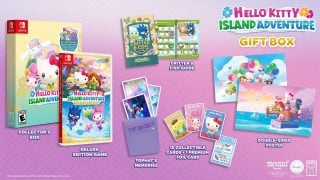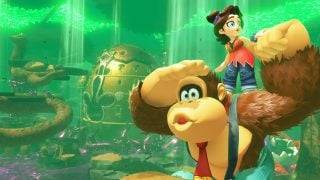When the original Hyrule Warriors was announced in 2013, I was over-the-Termina-moon hyped for it. The Legend of Zelda is by far my favorite Nintendo franchise, and Hyrule Warriors looked dedicated to fulfilling my fanboy desires with insane crossovers from all ends of the Zelda timeline. I’ve easily logged over 1,000 hours played across the Wii U, Nintendo 3DS, and Switch versions, and for a while, eagerly awaited a sequel that could top the original. Maybe with some extra characters like Vaati, Groose, and the Champions from Breath of the Wild. And while that sequel didn’t come to fruition, what we got in Hyrule Warriors: Age of Calamity was better than what I could’ve imagined. Although it isn’t quite the fan service buffet that was the original game, Age of Calamity is contextually, narratively, and graphically an improvement over its predecessor. But while it succeeds at being a Hyrule Warriors sequel, it fails at its other promise: being a prequel to Breath of the Wild that shows players “firsthand what happened 100 years ago.”
Story and premise
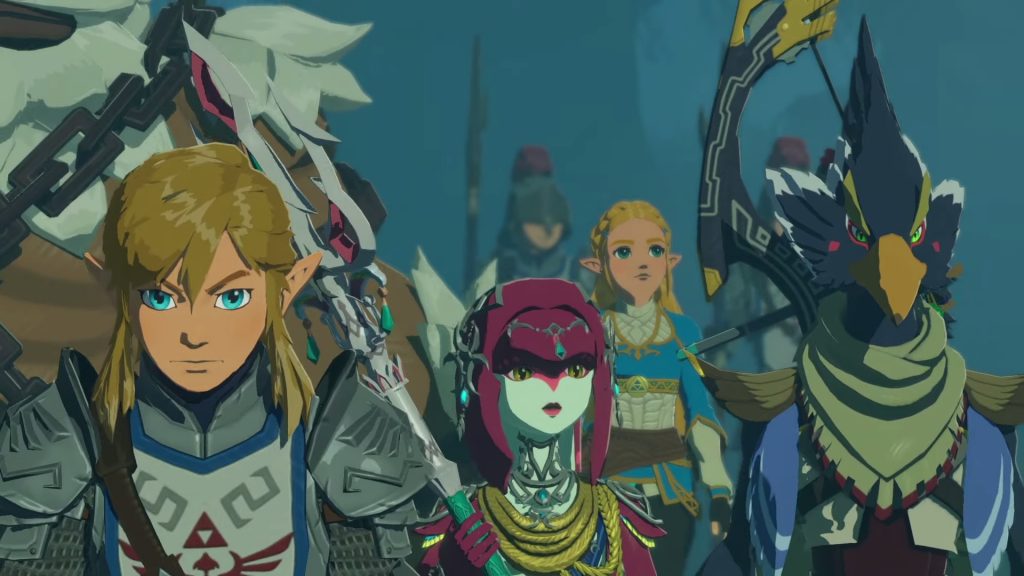
All four Champions from The Legend of Zelda: Breath of the Wild are playable and better than ever.
Hyrule Warriors: Age of Calamity is like other Musou games, and especially like the Nintendo-branded Warriors games of the 2010s: Hyrule Warriors and Fire Emblem Warriors. Players select from a diverse cast of playable characters to take on hordes of enemies (and occasional bosses) in wide playing fields. Although Age of Calamity markets itself as a prequel to Breath of the Wild, gameplay-wise, it’s barely anything like it. For those unaware of what the Warriors franchise is, don’t go into this game expecting the open-world adventure of Breath of the Wild. Age of Calamity is mission-focused, with levels selectable from a very BotW-inspired map and menu. Even with the two games distant in genre, one can see the connections basically everywhere else. Weapons, food, clothing, attacks, and especially the art-style all return from Breath of the Wild, as well as the UI and music. The game feels like Breath of the Wild, which is surely a comfort-bringer to Zelda fans unfamiliar with Musou gameplay.
The game’s premise revolves around depicting the events that took place 100 years before Breath of the Wild: the downfall of Hyrule and the rise of Calamity Ganon. The story has Link and Zelda, along with young versions of Impa and Purah from BotW, recruiting the four Champions and battling foes like the Yiga Clan and typical Hyrulian monsters in order to stop Calamity Ganon from destroying the world. Although that all sounds expected, I’ll say this without getting into spoiler territory: For those looking to see “firsthand what happened 100 years ago”… this ain’t it, chief.
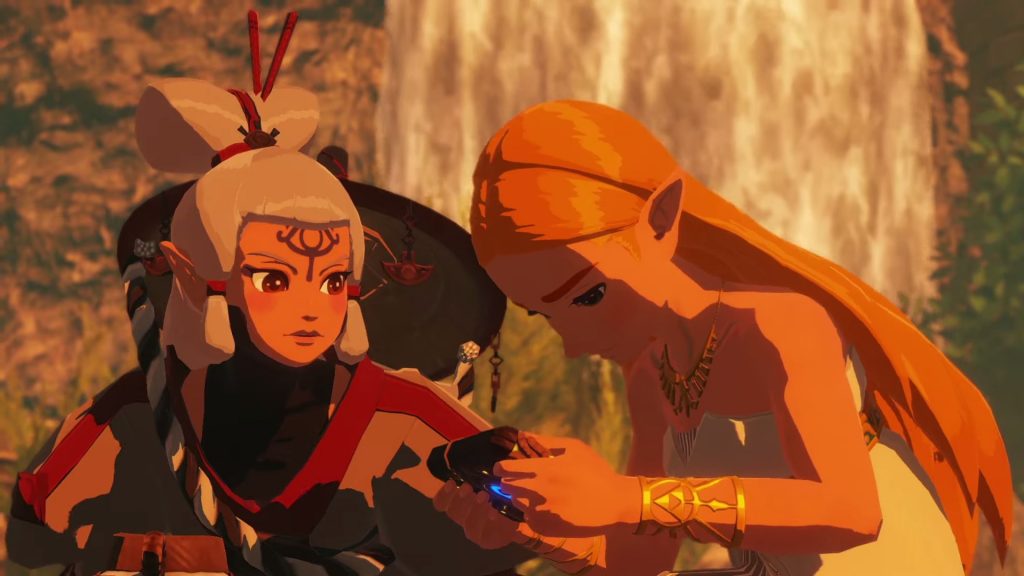
While the story direction is disappointing, there are touching character moments throughout the game.
There’s a lot to be said about my disappointment in the game’s story and ways I wish they’d approached things differently, but like I said before, I’d be spoiling it if I went any further. The game’s setting, a Hyrule 100 years in the past, is also not quite what I’d envisioned. I appreciate the attention to detail given to BotW’s Hyrule in this game, but there’s such a thing as being too faithful. There is virtually no difference in the game world between Age of Calamity and Breath of the Wild, which is absurd if you consider the former is set a century in the past. All the places you visit, from Gerudo Desert to Death Mountain, look the same as they do 100 years in the future. Technology, towns and settlements… apparently, nothing has changed in the time between the two games. Ignoring the few differences like Impa, Purah, Robbie, and Sidon’s younger selves, Nintendo could have set Age of Calamity a year before Breath of the Wild and that would’ve been more believable. Maybe there’s an argument to be made that the Great Calamity stunted Hyrule’s growth for 100 years, but I would’ve liked to see more of a contrast between Hyrule of the past and Hyrule of the future.
It becomes clear early on that Hyrule Warriors: Age of Calamity is not the Breath of the Wild prequel so many people expected, but is instead more akin to the first Hyrule Warriors: a fun romp with some of the Zelda series’ best characters. And that’s a shame, because presentation-wise, Age of Calamity is a marked improvement at delivering its story over the original Hyrule Warriors. Cutscenes feel like they carry more weight (in part due to the fine voice acting carried over from Breath of the Wild) and should be taken more seriously. There’s a lot more heart and charm that bleeds through every cinematic, lifted up by quality writing and unimpeded by the cries of strange anime girls like Lana and Cia. Characters from Breath of the Wild, like the Champions, are stand-out and given room to interact with each other in ways not seen before. Zelda, in particular, shows some very human emotions throughout Age of Calamity, doubting her own abilities and portraying a side of the princess we’ve rarely seen before. I loved everything about the way Age of Calamity told its story, and I think it’s worth playing this game just to see the Breath of the Wild cast et al. shine.
Gameplay
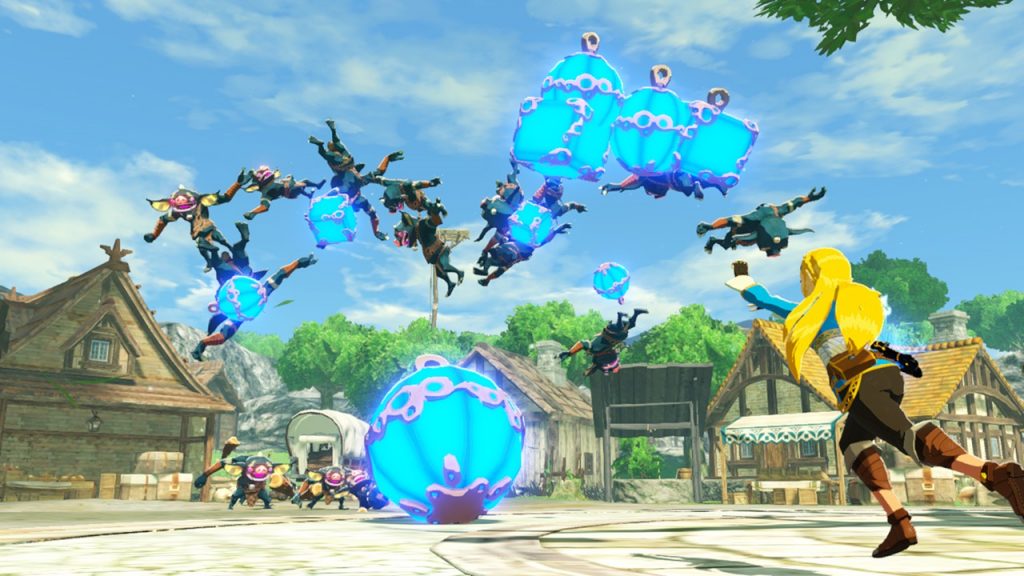
Character move sets are varied and unique.
If you’ve played a Warriors game, Hyrule Warriors: Age of Calamity is going to feel instantly familiar. It’s essentially the original Hyrule Warriors with a Breath of the Wild coat of paint, plus some new bells and whistles. You’re given a choice of character and then a series of objectives on a map (like defeat all enemies, capture a set of outposts, or protect a character). With your chosen weapon, you’ll battle against hordes of baddies, which are easily defeated with a few slashes of your blade. Across the map, you’ll pick up materials to help upgrade your weapons, Rupees to spend on training your characters, and you’ll even find a few secrets (like hidden Koroks) here and there.
Age of Calamity brings a few mechanics over from Breath of the Wild, like the parry system and the Sheikah Slate. Each character uses the Sheikah Slate and its runes in unique ways; for instance, while Link tosses a series of bombs using the bomb rune, Zelda instead commands a giant locomotive bomb that spits smaller bombs across the battlefield. These tools are essential to quickly defeating enemies, as icons above larger enemies will signal a specific rune weakness for you to take advantage of.
Besides standard Hyrulian monsters like Moblins, Wizzrobes, and Lizalfos, there are also bosses and mini-bosses to fight, like Hinoxes, Lynels, and Taluses. Enemies are all pulled from Breath of the Wild with no new surprises, apart from some elementally-charged variants like the Electric Hinox or Fire Lynel. Guardians are also fightable, although attacking them is a fair bit more complicated than it was in Breath of the Wild.
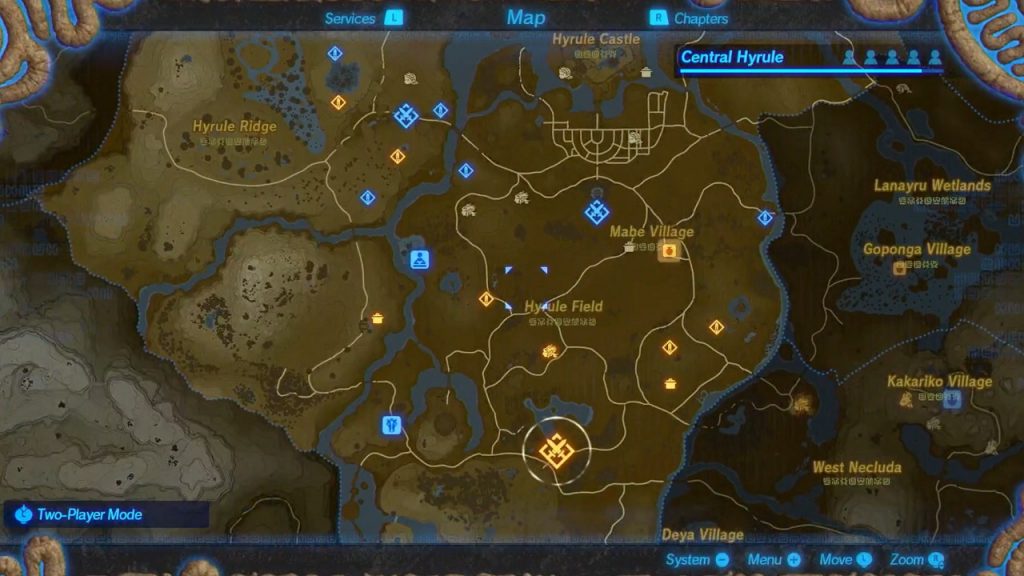
Get used to this screen, ’cause you’ll be seeing it a lot.
Between battles, you’ll spend your time on a map of Hyrule dotted with various symbols, which replaces the collection of menus from the original Hyrule Warriors. These symbols are your doors to side-missions to help strengthen your characters, quests involving delivering a certain number of supplies, and various merchants. By completing quests, you can learn new moves/combos for your characters, alleviating any staleness in combat. All missions can be done over and over, meaning Age of Calamity’s replayability is essentially infinite, and there are tons of things to do outside the main story chapters. Although the amount of content is nowhere near the original Hyrule Warriors’ (and especially all that came later via DLC, Hyrule Warriors Legends, and the Definitive Edition), there’s still quite a lot — maybe even an overwhelming amount — of stuff here.
Overall, I was very happy with the advancements in Hyrule Warriors’ mechanics Age of Calamity introduced. It feels like a more-perfect version of the original, with features like the Sheikah Slate and parry system that make combat feel more fluid.
Characters
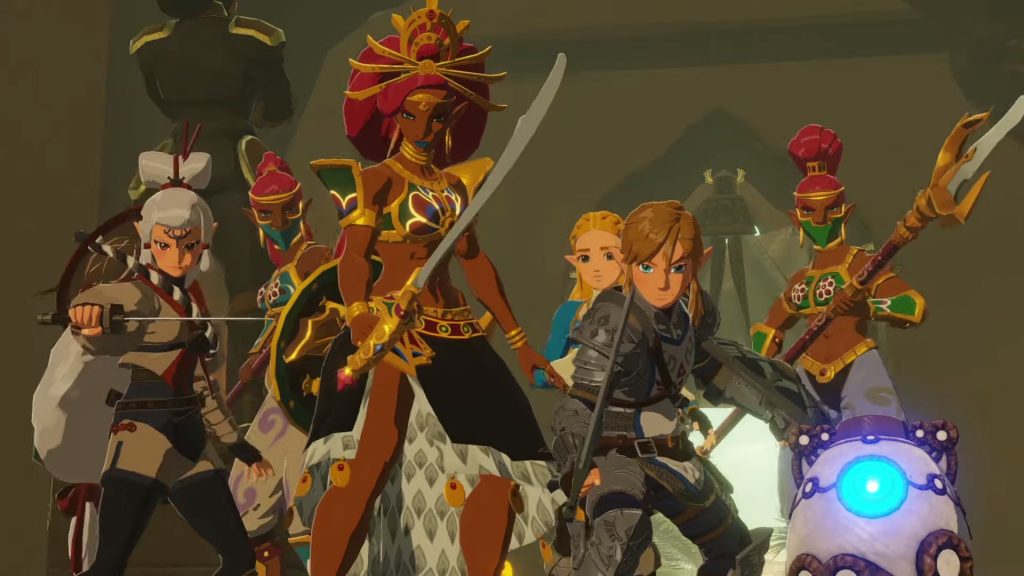
Impa and Urbosa were the most fun early-game characters I played as.
Playable characters are big selling point of any Warriors game, and Age of Calamity has a roster that should sate the appetite of any Breath of the Wild fan. All the expected characters are here, plus some unexpected picks that may surprise you. I won’t spoil how many there are, but there are certainly less than in Hyrule Warriors Definitive Edition — but more than Hyrule Warriors for Wii U’s base roster.
Coming off Fire Emblem Warriors, it’s great to see that each character in Age of Calamity plays unique. Whereas a significant portion of playable units in Fire Emblem Warriors had shared movesets, the characters in Age of Calamity are entirely their own. Link, in particular, is especially fun to play as since he can wield a variety of different weapons like spears, one-handed swords, and two-handed swords to mix up his fighting style.
Presentation
Hyrule Warriors: Age of Calamity’s art style is synonymous with The Legend of Zelda: Breath of the Wild’s, which was beautiful to begin with. The style translates well, although there are a few moments in which close-up shots during cutscenes show some unsightly low-res textures. The game’s soundtrack is composed of remixes of various tracks from BotW, plus some brand-new pieces that fit masterfully. Everything about Age of Calamity’s presentation feels like an extension of Breath of the Wild, from its menus to its sound effects, its graphics and music.
But while the game looks fantastic for the most part, how it runs is a different story. Frame rate dips are very noticeable and frustratingly common, especially when tons of enemies are on-screen at once or when lots of effects — like electricity or explosions — are erupting simultaneously. These issues don’t make the game unplayable by any means, but they’re a blemish on what is otherwise a pretty polished game. It’s a definite shame and is potentially fixable through post-launch updates, but I wouldn’t put money on it.
The verdict
Hyrule Warriors: Age of Calamity is a great game to sink hundreds of hours into. There’s a treasure trove of missions to do, a rich story to explore, and plenty of characters to enjoy. While the narrative wasn’t quite what I was expecting (or hoping for), it’s still full of entertaining twists and does enough to serve as a solid vehicle for Musou gameplay — certainly more than the original Hyrule Warriors’ plot did. The game is a must-buy if you’re a fan of The Legend of Zelda: Breath of the Wild and are looking for a little more adventure in its version of Hyrule, a fan of the original Hyrule Warriors and looking for more great Zelda-style Musou gameplay, or simply someone who has even the slightest bit of interest in this game.
Plus, you can likely expect further content updates in the future; the original Hyrule Warriors added three playable characters for free on top of several sets of paid DLC while Fire Emblem Warriors had its own season pass to purchase. But even without the promise of more, more, more, Hyrule Warriors: Age of Calamity is a perfectly plump package of Zelda goodness for you to sink your teeth into.
Leave a Comment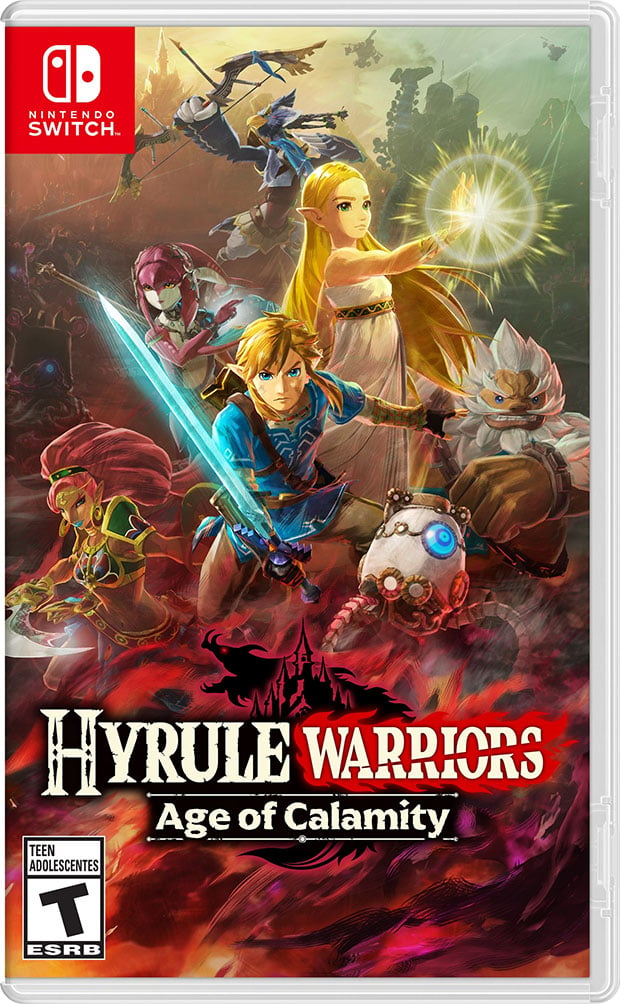
System: Nintendo Switch
Release Date: November 20, 2020
Categories: Musou, Hack and Slash
Publisher: Nintendo
Developer: Omega Force
